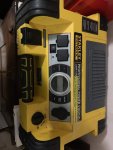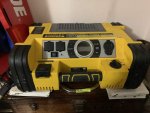peakbagger
Well-known member
- 734
- 360
- 63
- Location
- northern nh
My SEE is currently buried under a pile of early season snow and it usually sits there all winter until spring. Normally it starts instantly but in cold conditions or in the spring it really does not like to. One of the casualties of the mouse repairs was the ether can on the firewall no longer connects up the intake tract. The can is empty but I do get a whiff of ether when its cold so there are some fumes in the can.
My normal spring routine is have charged batteries and make sure I prime the fuel system up to the filter. I then remove the air filters and spray a liberal dose of starting fluid down the intake duct. It will crank over readily and I can here the starting fluid turning it over but it takes a lot of cranking with the pedal on the floor before I get any signs that fuel if getting to the injectors. Eventually it does start and after a few minutes its running fine. It then restarts well and does so until the next spring.
I think the fuel injectors on the SEE are typical diesel injectors that are spring loaded to hold fuel until it reaches a certain pressure and then it sprays. My guess is that the injector lines are drained and possibly the injection pump is air bound. Since the pump depends on fuel for lubrication I don't think its a great idea to crank it for long periods. Of course the other issue is that the vacuum leak in the fuel inlet piping is coming back to haunt me with the higher viscosity fuel due to temperature.
The question for the group is, Is anyone aware of prepriming procedure I could use to prime the injector pump all the way to the injectors?
One thing I have considered is hook up a pressurized fuel source on one of the Tees on where the diagnostic pressure transmitter is and pump pressurized fuel directly into the fuel line upstream of the mechanical fuel pump. In theory this should eventually recirculate back to the tank. Of course if the fuel is just dribbling out of the injectors as the preload springs are not holding, I expect the fuel is just washing down into the oil. I do have to be careful as I don't know the pressure rating on the fuel filters.
My normal spring routine is have charged batteries and make sure I prime the fuel system up to the filter. I then remove the air filters and spray a liberal dose of starting fluid down the intake duct. It will crank over readily and I can here the starting fluid turning it over but it takes a lot of cranking with the pedal on the floor before I get any signs that fuel if getting to the injectors. Eventually it does start and after a few minutes its running fine. It then restarts well and does so until the next spring.
I think the fuel injectors on the SEE are typical diesel injectors that are spring loaded to hold fuel until it reaches a certain pressure and then it sprays. My guess is that the injector lines are drained and possibly the injection pump is air bound. Since the pump depends on fuel for lubrication I don't think its a great idea to crank it for long periods. Of course the other issue is that the vacuum leak in the fuel inlet piping is coming back to haunt me with the higher viscosity fuel due to temperature.
The question for the group is, Is anyone aware of prepriming procedure I could use to prime the injector pump all the way to the injectors?
One thing I have considered is hook up a pressurized fuel source on one of the Tees on where the diagnostic pressure transmitter is and pump pressurized fuel directly into the fuel line upstream of the mechanical fuel pump. In theory this should eventually recirculate back to the tank. Of course if the fuel is just dribbling out of the injectors as the preload springs are not holding, I expect the fuel is just washing down into the oil. I do have to be careful as I don't know the pressure rating on the fuel filters.




